Transcription of CRITICALLY ASSESSING THE STRENGTHS AND …
1 1 CRITICALLY ASSESSING THE STRENGTHS AND LIMITATIONS OF THE business model CANVAS Master thesis business Administration Author: Bastian Coes Student number: s1246615 E-mail: Study: Master business Administration Specialty: Innovation and Entrepreneurship First Supervisor: Dr. Ir. J. Kraaijenbrink Second Supervisor: Ir. B. Kijl Date: March 13, 2014 2 Acknowledgements This thesis is the last part of the graduation from the Master business Administration at the University of Twente. The subject of this master thesis is in line with my specialization track and personal interest Innovation and Entrepreneurship . I had a great time and learned a lot at the University of Twente. Therefore I want to thank all the people who shared knowledge with me during college hours as well during the group work. Especially, many thanks to Dr. Ir. Jeroen Kraaijenbrink for facilitating this graduation topic about business model Canvas and for supervising the research.
2 The given feedback was of great use during the process of research and writing the thesis. Furthermore, many thanks to second supervisor Ir. Bj rn Kijl for giving feedback at the last stage of my research. Equally important are my words of thank to the participants in the interviews for scheduling a lot of time of their busy agendas and for validating the written results. Last but not least, I would like to thank my family, girlfriend, friends and fellow students for supporting me during the whole master and especially during the thesis phase. Nijverdal, March 2014 Bastian ( ) Coes 3 Executive summary The business model Canvas is a popular tool for designing business models and has contributed to the use of more business models in organizations. Based on this research STRENGTHS and limitations are recognized which should be taken into account when working with the business model Canvas. The STRENGTHS and limitations are extracted from three sources of information.
3 First a theoretical analysis and theoretical comparison with alternative business model tools is executed, second an online review is conducted at online blog posts and online comments on discussion threads are analyzed, and third, interviews with experienced business model developers is done. Based on the triangular results the business model Canvas STRENGTHS are about the centrality of capturing and delivering value when designing a business model . Furthermore, strong points are the visual representation, usefulness and simplicity of designing and communicating business models. The business model Canvas is seen by interviewees as a tool contributing to the communication about business models with employees, partners and customers. Next to these STRENGTHS , several limitations are identified. The main limitations based on the three sources of data are: the exclusion of external forces to a business model , such as competition, market factors and other external forces, and the narrowness of the Value Proposition.
4 In the business model Canvas the focus is on creating value with revenue on return. This excludes other purposes of organizations such as non-profit and governmental organizations. Furthermore, the difference between the level of detail of description in the building blocks is a limitation. The separation of Key Activities and Key Resources imply a higher level of detail about what the organization need to do to create its Value Proposition, the same counts for Channels and Customer Segments. Which is directed at more detail then for example the building blocks Key Partners and Customer Segment. Other limitations are directed at what the mechanisms between the individual building blocks are. Suggested is to create these mechanism by team cooperation and making a story next to the business model Canvas. business model Canvas users should be at least aware of these limitations and know how to cope with limitations. Also business model developers could consider to adjust the business model Canvas or to use adjusted business model tools.
5 4 Research abstract Aim of study The aim of this research is to identify positive and negative criticism about the business model Canvas. The business model literature and research field is a relatively new research topic. The concept business model for organizations is an increasing topic of interest. The results of this research may add insights to the discussion about business model tools and particularly on the business model Canvas on academic level as well as on business practice level. Methodology The research goal is to find STRENGTHS and limitations of the business model Canvas. To answer the question: What are the STRENGTHS and limitations of the business model Canvas in the design and application phases of a business model ? an exploratory research is needed. A combination with an online review and a multiple-case study method is used to analyze different cases and the experience of the interviewee with the business model Canvas.
6 The online review is used to find a broader view on STRENGTHS and limitations from business practioners. An extensive online search of online resources is conducted. Sources of these comments are websites, blogs and forums. The multiple-case study interviews are conducted with six users of the business model Canvas in different types of organizations to extract experiences with the tool. During the interview the business model Canvas is analyzed on experience in the interviewees organization, where the business model is analyzed on validity, reliability and controllability. The case selection is done trough Snowball sampling and the data analysis is based on a narrative approach. Between these different stories the cases will be compared on agreement and disagreement. Results Based on the different research methods interesting STRENGTHS and limitations of the business model Canvas are explored. Between the different research methods a pattern can be recognized between STRENGTHS and limitations.
7 strength of the centrality of value in making business models, the visual representation and usability is attributed to the business model Canvas. Limitations such as the exclusion of competition and the narrow aim to profit generating organizations are identified. Implications This research contributes to the theoretical discussion about an ideal type of business model and corresponding business model tools. In practical terms this research contributes to the awareness of the STRENGTHS and limitations of the business model Canvas which may optimize business model design processes. Furthermore, this research provides clues of improvement of business model tools and in particular to the business model Canvas. Future research To improve the reliability of the research a bigger sample should be used to strengthen the prove of the explored STRENGTHS and limitations. To gain more validity individual findings should be investigated in higher detail.
8 For example, by conducting an empirical research on a big sample. Future research should be focusing to an ideal type of a business model and therewith an ideal business model tool. 5 Table of contents Acknowledgements .. 2 Executive summary .. 3 Research abstract .. 4 1. Introduction .. 7 Motivation, relevance and research gap .. 7 Research question .. 8 Overview .. 9 2. Theory .. 10 Definition, purpose and elements .. 10 Relation business model with other concepts .. 13 business model tools and alternative business model tools .. 19 Conclusion STRENGTHS and limitations of the business model Canvas based on literature .. 29 3. Methodology .. 33 Research Design .. 33 Criteria for analyzing business model tools .. 37 Research validity and reliability .. 40 4. Online review .. 41 Online review on business model Canvas .. 41 Conclusion STRENGTHS and limitations based on the online review .. 47 5.
9 Results of the interviews .. 50 General introduction of company and experience with the business model Canvas .. 50 Validity of the business model Canvas .. 53 Reliability of the business model Canvas .. 75 Controllability of the business model Canvas .. 77 Conclusion validity, reliability and controllability of the business model Canvas .. 80 6. Discussion and recommendations .. 83 Results and discussion .. 83 Practical implications .. 86 Theoretical implication .. 87 Limitations and suggestions for future research .. 88 References .. 90 Appendix 1: Alternatives of the business model Canvas .. 94 Appendix 2: Interview protocol .. 98 6 Table of contents Table 1: Elements of business model Canvas .. 13 Table 2: Lean Canvas .. 25 Table 3: Fluidminds business model Canvas .. 26 Table 4: IBM s Component business Modeling .. 28 Table 5: The Value model .. 29 Table 6: STRENGTHS and limitations based on alternative business model tools.
10 32 Table 7: Search terms for online review .. 34 Table 8: Meta details of cases .. 36 Table 9: Interview protocol .. 37 Table 10: Criterion validity .. 39 Table 11: Criteria reliability and controllability .. 39 Table 12: Research validity and reliability .. 40 Table 13: Sources of online STRENGTHS and limitations of the BMC .. 41 Table 14: Results of the online review of business model Canvas .. 49 Table 15: Company ID and experience of the interviewee .. 50 Table 16: Construct validity: Value proposition .. 54 Table 17: Construct validity: Customer segment .. 55 Table 18: Construct validity: Channels .. 56 Table 19: Construct validity: Customer relations .. 57 Table 20: Construct validity: Cost structure and revenue streams .. 58 Table 21: Construct validity: Competitive strategy .. 59 Table 22: Construct validity: business model innovation .. 60 Table 23: Construct validity: Key resources and Key activities .. 61 Table 24: Construct validity: Key partners.
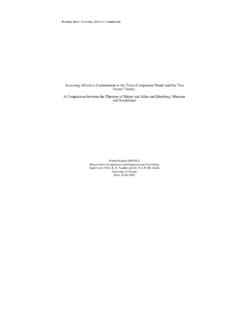
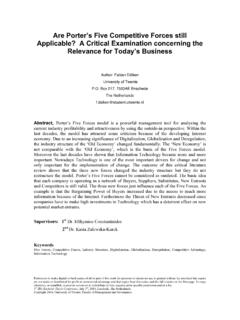

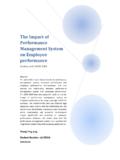
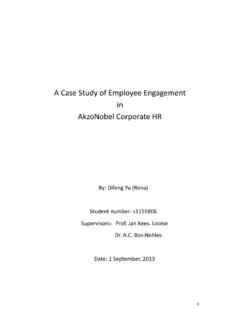
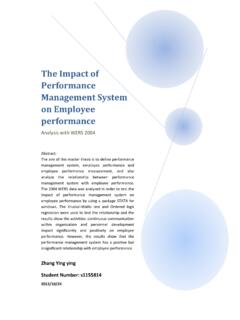
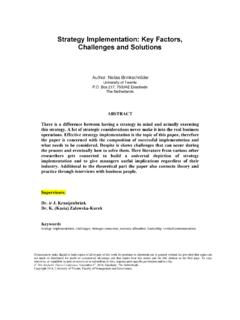
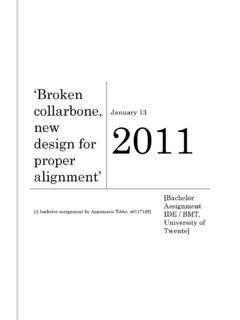

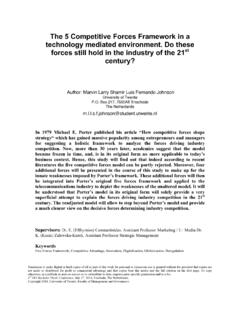
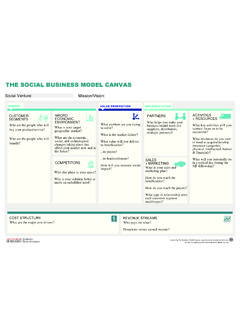

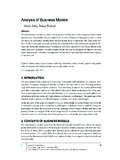

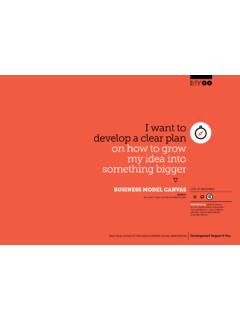
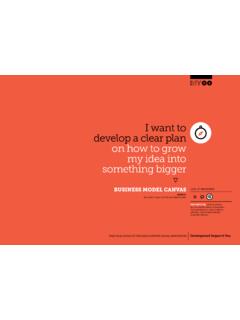

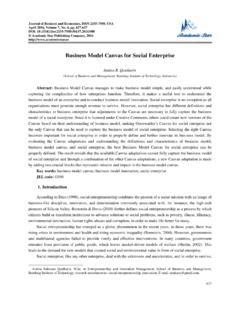

![CWT 1dbX]Tbb <^ST[ 2P]ePb 3TbXV]TS U^a) …](/cache/preview/0/6/9/7/0/6/d/e/thumb-069706de32ac780ef219ca36b5ba0904.jpg)